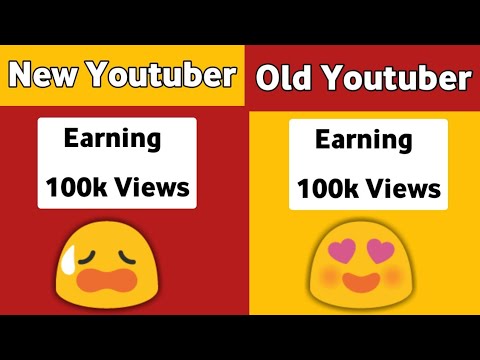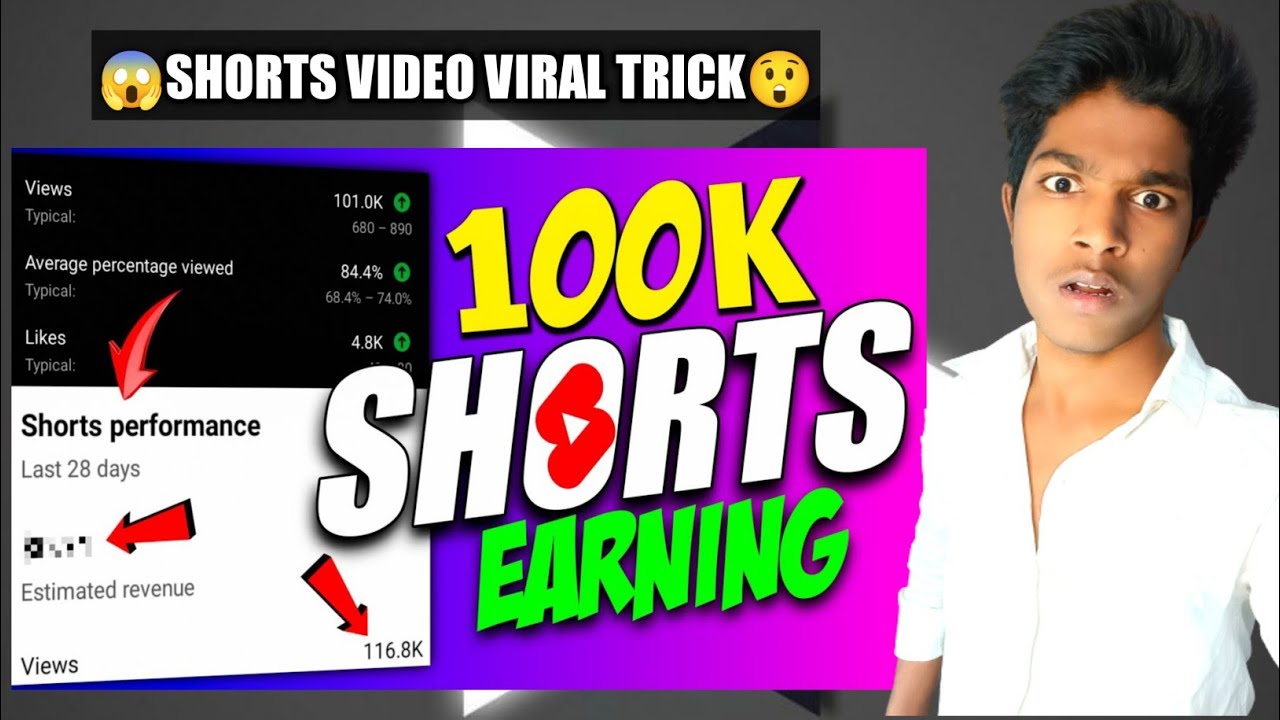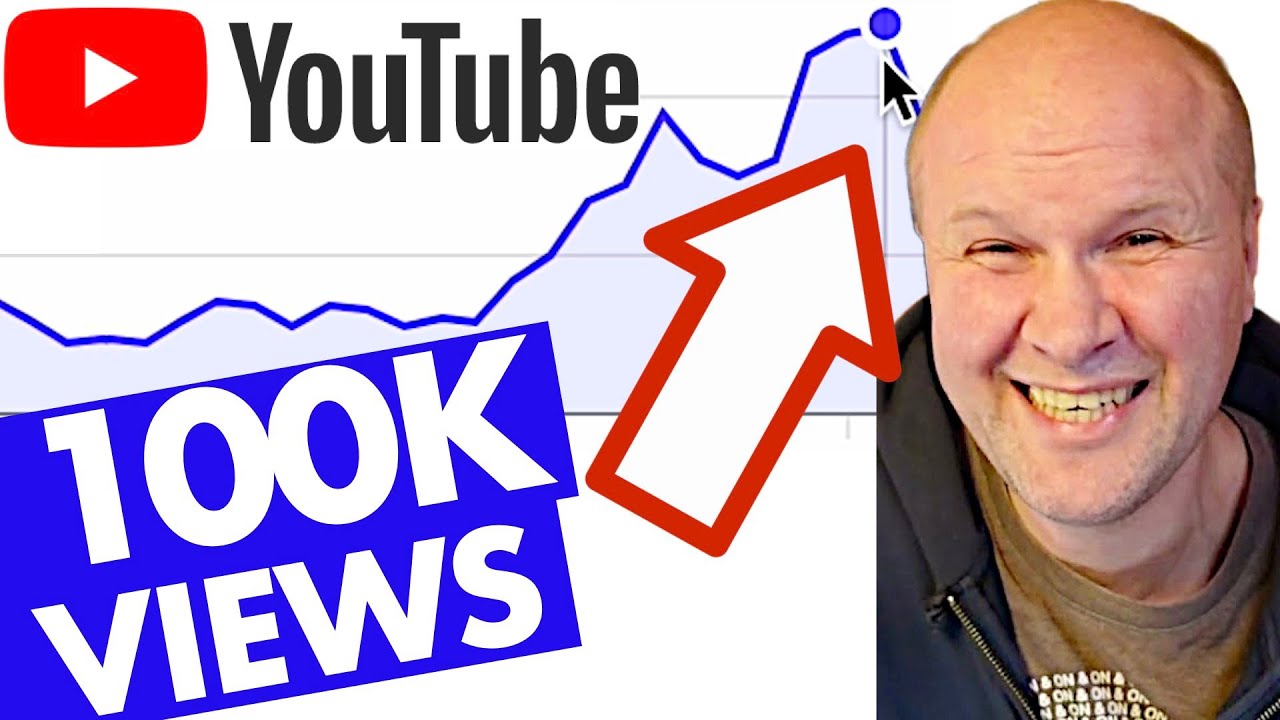Introduction to YouTube Monetization

Ever wondered how much YouTubers earn from their videos? With 100,000 views, it might be more than you think! YouTube monetization is all about turning views into cash, and there are various ways creators can do this. From ad revenue to sponsorships, let’s break down how YouTubers keep the lights on and the cameras rolling.
Also Read This: What Happened to The Life’s Adventures YouTube Channel Today? A Look Into the Situation
Factors Influencing YouTuber Revenue

When it comes to YouTube earnings, several factors come into play. Understanding these can help clarify why some channels make more money than others, even with similar view counts. Let’s dive into the key influences on a YouTuber's income:
- Ad Revenue: This is the most common source of income for YouTubers. They earn money from ads shown during their videos. The Cost Per Mille (CPM), or cost per thousand views, varies based on several factors, including the audience's location and the content niche. For instance, channels focused on finance or technology often have higher CPM rates, sometimes ranging from $10 to $30, compared to lifestyle or gaming channels, which might earn around $2 to $8.
- Audience Engagement: The more engaged your audience is, the higher your earnings can be. Factors like watch time, likes, comments, and shares influence how ads are served to viewers. A video that keeps viewers watching longer is more valuable, as it tends to attract higher ad revenue.
- Content Type: The niche of the channel significantly impacts revenue. For example:
- Sponsorships and Brand Deals: Many YouTubers partner with brands for sponsored content, which can yield substantial income. These deals often pay much more than ad revenue, giving creators an opportunity to earn thousands of dollars for a single video, depending on their reach and engagement.
- Affiliate Marketing: Some YouTubers include affiliate links in their video descriptions. When viewers purchase products through these links, the YouTuber earns a commission. This can be a lucrative income stream, especially for product review channels.
- Merchandise Sales: Successful YouTubers often develop their own merchandise, such as clothing or accessories. This not only promotes their brand but also creates another revenue source. For example, a YouTuber with a loyal fanbase can sell thousands of T-shirts after a single video release.
| Niche | Average CPM Range |
|---|---|
| Finance | $10 - $30 |
| Tech | $8 - $20 |
| Health & Fitness | $5 - $15 |
| Lifestyle | $2 - $8 |
This table shows how content type can lead to significant earnings differences.
In summary, YouTuber earnings from 100,000 views can vary widely based on multiple factors. By understanding these dynamics, both creators and aspiring YouTubers can strategize their content for better financial success!
Also Read This: How to Know if You Are Shadowbanned on YouTube: Signs and Solutions
3. Ad Revenue Breakdown for 100K Views

When it comes to YouTube earnings, ad revenue is often the first thing that comes to mind. For a video that garners around 100,000 views, the earnings can vary significantly based on several factors. Let's break down how this works.
Firstly, the type of ads that run on your video plays a crucial role. YouTube primarily uses two types of ads:
- Display Ads: These appear next to your video and aren’t click-based.
- Video Ads: These can be skippable or non-skippable and are generally more lucrative.
Now, let's talk about the key metric: CPM (Cost Per Mille), which means the cost per 1,000 ad impressions. On average, CPM rates can range from $1 to $20, depending on your niche, audience demographics, and the time of year. Here's a quick breakdown:
| CPM Rate | Estimated Earnings for 100K Views |
|---|---|
| $1 | $100 |
| $5 | $500 |
| $10 | $1,000 |
| $20 | $2,000 |
The above table gives you a rough estimate of what you might earn for 100,000 views based on different CPM rates. However, it’s important to note that not all views lead to ad impressions. Typically, only about 40-80% of views will generate ads, meaning your earnings could be lower than the potential maximum.
Additionally, ad earnings depend on the audience's engagement. If viewers skip ads, for instance, you won’t earn from those impressions. Also, CPM can fluctuate throughout the year — for example, during the holiday season, advertisers often increase their budgets, leading to potentially higher CPM rates.
In summary, while ad revenue is a significant part of YouTube earnings, it's just one piece of the puzzle. Understanding how these factors interact can help you better predict your earnings from a video that hits 100K views.
Also Read This: How to Upload Videos on YouTube Fast: Speed Up the Upload Process
4. Additional Income Streams for YouTubers

While ad revenue can be a great source of income, savvy YouTubers know that relying solely on it is not the best strategy. There are multiple additional income streams that can significantly boost earnings. Let's explore some of them!
- Sponsorships: Many brands are willing to pay YouTubers to feature their products. These deals can range from a few hundred to thousands of dollars, depending on your channel's size and niche.
- Merchandise Sales: If you have a loyal fan base, selling branded merchandise like t-shirts, mugs, or stickers can be a lucrative venture.
- Affiliate Marketing: Promoting products in your videos and including affiliate links in the description can lead to commissions on sales generated through your recommendations.
- Memberships and Patreon: Engaging with your audience via platforms like Patreon allows fans to support you directly in exchange for exclusive content or perks.
Each of these income streams can complement your ad revenue beautifully. For example, if you have a dedicated audience, a sponsorship deal could significantly exceed your monthly ad earnings. Similarly, merchandise sales allow fans to feel more connected to you and can provide consistent income.
In conclusion, diversifying your income streams is essential for maximizing your earnings as a YouTuber. By exploring these additional avenues, you can create a more sustainable income model that isn’t solely dependent on ad revenue. Who knows? With the right strategy, you might just turn your passion for creating videos into a full-time career!
Also Read This: Why Is My Like Button Not Working on YouTube? Troubleshooting Issues with Engagement Features
5. Case Studies of Successful YouTubers
Let’s dive into some real-world examples of YouTubers who have mastered the art of monetization, particularly with videos that reach around 100,000 views. These case studies showcase different niches, strategies, and revenue streams that can illuminate what’s possible on the platform.
1. “Tech with Tim” (Tim)
Tim is a tech enthusiast who creates tutorials and reviews. With his average videos garnering 100K views, he earns primarily through:
- Ad Revenue: Approximately $300 from ads, thanks to a tech-savvy audience that attracts higher CPM rates.
- Sponsored Content: Brands often sponsor his videos, bringing in an additional $500-$1,000 per video.
- Affiliate Marketing: Tim promotes software and gadgets, earning up to $200 in commissions.
In total, each 100K view video could generate between $1,000 and $1,500!
2. “Fitness Blender” (Daniel and Kelli)
This fitness channel offers workout videos and health advice. Here’s how they monetize their content:
- Ad Revenue: With a focus on fitness, they could earn around $350 from 100K views.
- Merchandise Sales: They sell workout plans and merchandise, which can yield $600-$800 per video.
- Subscription Services: They offer premium content through a subscription model, potentially adding another $200.
Combining these streams, each video can bring in approximately $1,200 to $1,400.
3. “The Financial Diet” (Chelsea Fagan)
In the personal finance niche, Chelsea combines education and entertainment. Here’s her breakdown:
- Ad Revenue: Financial content often commands a high CPM, so she might see around $500 from ads for 100K views.
- Online Courses: Chelsea promotes courses on budgeting, generating around $1,000 per video.
- Partnerships with Brands: Collaborating with financial institutions can earn her $700 or more.
This adds up to a remarkable $2,200 or more per video!
These case studies demonstrate that while ad revenue is significant, diversifying income streams is crucial for maximizing earnings on YouTube. Whether through sponsorships, merchandise, or affiliate marketing, successful YouTubers find ways to monetize their content effectively.
6. Conclusion: What You Need to Know About YouTube Earnings
Understanding YouTube earnings, especially from videos that hit the coveted 100K view mark, requires more than just a grasp of ad revenue. It’s essential to recognize several key factors that can influence how much a YouTuber actually makes.
1. Niche Matters: The type of content is crucial. Channels in lucrative niches like finance or technology often have significantly higher CPMs compared to lifestyle or vlogging channels.
2. Engagement Rates: High view counts are fantastic, but engagement (likes, comments, shares) can also impact earnings. More engagement usually leads to better ad opportunities and potential for sponsorships.
3. Diversified Income Streams: As seen in our case studies, relying solely on ad revenue isn’t the best strategy. Successful YouTubers leverage various revenue sources, including affiliate marketing, merchandise, and online courses.
4. Consistency is Key: Regularly uploading quality content helps retain viewers and build a loyal audience. This consistency not only boosts earnings through ad revenue but also makes channels more attractive to sponsors.
In conclusion, if you’re looking to make a career on YouTube, remember that it’s not just about hitting that 100K view milestone. It’s about creating a sustainable, engaging platform that resonates with your audience and explores several monetization avenues. So, keep creating, stay engaged with your viewers, and don’t be afraid to experiment with different income strategies!
 admin
admin








